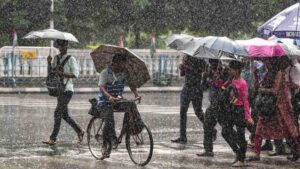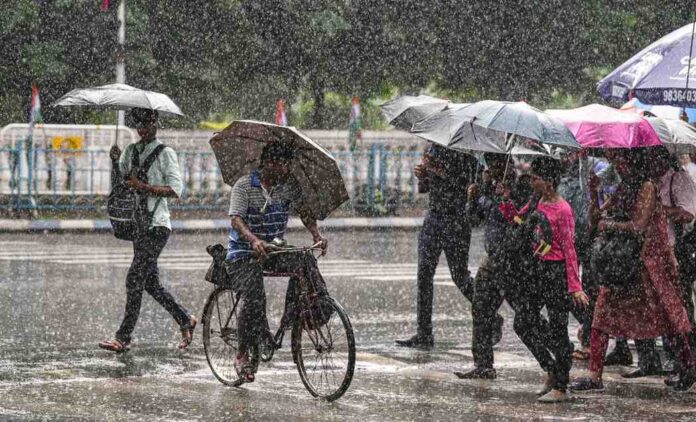Cyclone ‘Monthi’ Brews Over Bay of Bengal: Odisha, West Bengal Brace for Impact
As the monsoon season inches closer, a new threat looms large over India’s eastern coastline. A cyclonic circulation, currently manifesting as a low-pressure area over the Bay of Bengal, is rapidly intensifying and has been christened Cyclone ‘Monthi’. This developing weather system has put the coastal states of Odisha and West Bengal on high alert, with authorities initiating comprehensive preparedness measures to mitigate potential damage and ensure public safety. The India Meteorological Department (IMD) is closely monitoring its trajectory and strength, issuing regular updates as the region braces for what could be a significant weather event.
A Brewing Storm: The Genesis of Cyclone Monthi
The genesis of Cyclone Monthi can be traced back to a persistent cyclonic circulation that has been observed in the southeast Bay of Bengal over the past few days. This circulation has progressively consolidated into a well-marked low-pressure area, a critical precursor to cyclonic storm formation.
The IMD’s latest bulletins indicate that the system is moving in a generally north-northeasterly direction. While the exact path and potential landfall location are still subject to some variability, preliminary forecasts suggest that the coastal districts of Odisha and West Bengal are most vulnerable to its direct impact. This uncertainty underscores the importance of continuous monitoring and swift response from disaster management agencies. The experience of previous cyclones, such as Fani and Amphan, serves as a stark reminder of the devastating power these storms can unleash, necessitating a proactive and coordinated approach.
Odisha and West Bengal on High Alert: Preparedness in Full Swing
Both Odisha and West Bengal, states with extensive coastlines and a history of battling cyclones, have swung into action. Odisha Chief Minister Naveen Patnaik has convened high-level meetings with district collectors and departmental heads, emphasizing the need for ‘zero casualty’ preparedness. Teams from the Odisha Disaster Rapid Action Force (ODRAF) and the National Disaster Response Force (NDRF) are being strategically positioned in vulnerable areas. Fishermen have been strictly advised to return to shore and not venture into the sea until further notice. Coastal communities are being sensitized about the potential risks, and evacuation plans are being reviewed and updated.
Similarly, in West Bengal, the state administration is leaving no stone unturned. Control rooms have been activated in districts like Purba Medinipur, South 24 Parganas, and North 24 Parganas, which are traditionally susceptible to cyclonic activity. The Kolkata Municipal Corporation (KMC) is also on high alert, preparing for potential heavy rainfall and urban flooding. Disaster management teams are ensuring the availability of essential supplies, communication equipment, and medical aid. The focus remains on proactive evacuations from low-lying areas and temporary shelters being identified and readied.
The Threat Matrix: Wind, Rain, and Storm Surge
Cyclone Monthi is expected to bring a multi-pronged threat to the affected regions. The primary concerns include:
Heavy to Very Heavy Rainfall: Widespread heavy rainfall is anticipated across coastal Odisha and West Bengal, with some areas likely to experience extremely heavy downpours. This could lead to localized flooding, disruption of road networks, and potential damage to crops.
High-Velocity Winds: As the cyclone makes its approach, wind speeds are expected to escalate significantly. Gusts reaching hurricane strength are a distinct possibility, posing a threat to kutcha houses, temporary structures, power lines, and trees.
Storm Surge: For coastal areas, the most dangerous aspect of a cyclone is often the storm surge—an abnormal rise in sea level caused by the storm’s winds pushing water ashore. This can inundate low-lying coastal regions, leading to severe property damage and loss of life.
Rough Sea Conditions: The Bay of Bengal is expected to turn extremely rough to very rough, making navigation hazardous. Ports along the east coast have been advised to hoist warning signals.
A Look at the Scientifics: Tracking Cyclone Formation
The formation and intensification of cyclones are complex meteorological phenomena influenced by several factors. Warm sea surface temperatures (above 26.5°C) provide the necessary heat and moisture. A pre-existing low-pressure area or cyclonic circulation acts as the initial ‘seed’. Low vertical wind shear allows the storm to organize vertically without being torn apart. Finally, a moist atmosphere helps sustain the convection. The IMD utilizes a combination of satellite imagery, radar data, weather buoys, and numerical weather prediction models to track these systems with increasing accuracy. The advancement in these technologies has significantly improved early warning capabilities, allowing for better preparedness and response.

The Role of Public Awareness and Cooperation
Beyond governmental efforts, public awareness and cooperation are paramount in minimizing the impact of cyclones. Residents in vulnerable areas are urged to:
Stay Informed: Continuously monitor official weather bulletins from the IMD and local disaster management authorities. Avoid relying on unverified social media forwards.
Prepare Emergency Kits: Keep an emergency kit ready with essential items like food, water, medicines, a flashlight, power bank, and important documents.
Secure Homes: Secure loose objects, trim tree branches, and take necessary precautions to protect homes from strong winds.
Follow Evacuation Orders: If advised to evacuate, do so promptly and move to designated cyclone shelters. Do not delay.
Cooperate with Authorities: Extend full cooperation to NDRF, ODRAF, and other emergency personnel.
Conclusion: A Vigilant Watch Continues
Cyclone Monthi represents a formidable challenge for India’s eastern coast. While the exact details of its path and intensity are still evolving, the proactive measures initiated by the state governments of Odisha and West Bengal, coupled with the vigilant monitoring by the IMD, offer a glimmer of hope for minimizing its potential impact. The coming hours will be crucial as the system continues to develop. It is a time for heightened awareness, preparedness, and collective resilience as the nation watches the Bay of Bengal with bated breath, hoping that ‘Monthi’ passes with the least possible devastation. The commitment to ‘zero casualty’ remains the guiding principle, underscoring the invaluable lessons learned from past climatic events.


